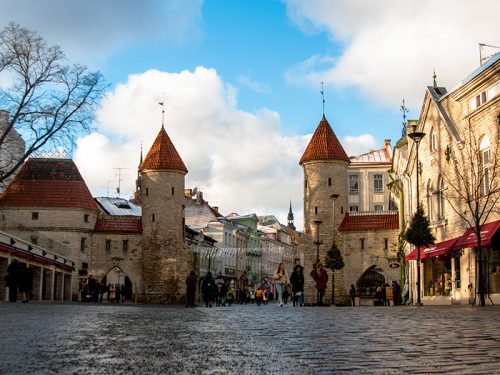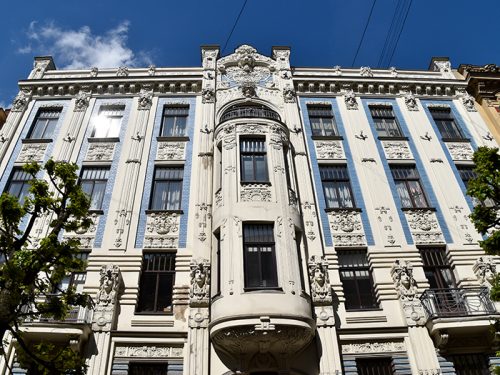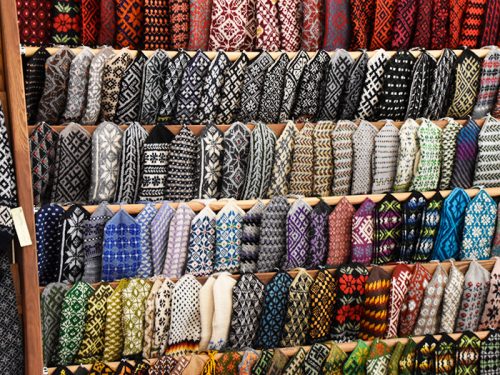Searching for the Baltic Secrets
2021/3/5
Tallinn (Estonia) / Riga (Latvia)
The three Baltic countries facing the Baltic Sea are Estonia, Latvia and Lithuania. While they may not appear very often in world history books, they closely share a history that goes back over 800 years in time. They share many geographic and historical characteristics, yet each has a different language and unique culture. The three capitals have been registered as UNESCO World Heritage Sites, with scenery and stone-paved streets that seem to come out of a fantasy book. Beautiful buildings and delicate crafts can be found all around each of these cities, something that will surely charm any traveler that stops by.

On the other side of the Secret Veil
The 13th Century was crucial for the Baltic countries. Under the influence of the surrounding powerful countries, they joined the Hanseatic League, becoming important trade posts and developing their economies. Some of the most famous remains from this time can be seen in the old towns, where buildings with German, Russian and Scandinavian influence are lined up. The local food also reflects this cultural intertwining. While Estonia was quite receptive of innovations, Lithuania tried to preserve and respect its nature. On the other hand, Latvia balanced both ideologies. These aspects led to three completely different countries. We will visit the towns that tell us this story.

Seeking the Remnants of the Medieval Age
We have arrived to Tallinn, the capital of Estonia. First, to see the cityscape, we have decided to climb Toompea Hill, next to the old town. From its observatory, you can see the walls surrounding the city, as well as the red-roofed houses that appear often in many fairy tales. Fascinated by the emblems seen in the walls and stores, we start walking down to the busy Raekoja square. Surrounded by old and lovely buildings, you can enjoy this atmosphere in the open-air cafes or restaurants. The waiters, dressed like people from the medieval age, entertain those who pass by.

While walking these stone-paved streets, we hear a bell ringing. This clear sound comes from the Holy Spirit Church, Tallinn’s oldest church built in the 14th century. This was apparently the first place to preach Christian teachings in Estonian. Stained glasss picturing the teachings of the Bible were set for those who could not read, giving comfort to many people dominated by other countries. With this solemn air, we go outside the church to see a big clock from the 17th century. Many years have passed in Tallinn since medieval times, but with this visit it feels as if a secret door has been opened for us.

Ancient Towns with a Dignified Atmosphere
Riga, Latvia’s capital, has a classical feeling through its European influence, and is somtimes referred as the Baltic Lady. It flourished as a central part of the Hanseatic League, becoming the biggest city of the Baltic states. One of it main attractions is the Art Nouveau complex, Jugendstil. The motifs and decorations that break away from the walls seem more like a piece of art than a building. Riga has the most Art Nouveau buildings in Europe. We can also see the 123 meter spire of St. Peter’s Church, as well as a fusion of Romanesque, Gothic and Baroque styles at the Riga Cathedral. There is no doubt that Riga is a place people with an interest in architecture will enjoy.

Even looking at the signboards of stores is quite fun. Looking at a sign with a beer barrel and fry pan, we wonder what the store is selling! You can see and feel the creative designs and spirit of the artisans, people who continue to support the city’s culture. To get to know Riga better, head to the Central Market in the new town – which used to be an air hangar. The new town, which evolved along with the times, will show you a different facet of Riga from the beautiful old town. Watching the Latvian people come and we drink a local Riga craft beer will be a lingering memory of this trip.

Hand Labor, a Crystallization of Tradition and Pride
At first glance, the Baltic cities appear to be a kind of art work. Choosing a souvenir is great fun, but I recommend you to come prepared to go over your initial budget. Even entering a general goods store, you can find lovely mittens with traditional designs. The patterns and colors differ between rergions and have been passed down through the generations. It is also said the patterns are a kind of abstract form of prayer. Other popular souvenirs make use of the high quality honey that can be harvested in the Baltic countries. You can find honey candles and honey body soap too! In this cozy store, even more than souvenirs, you can expereince the beautiful handicrafts, finding treasures with roots in the brave lifestyle of these people, who since long ago had to endure a harsh natural environment and the control of other countries.
